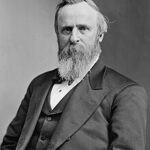The Historic Return to Gold
President Rutherford B. Hayes achieved one of America’s most crucial economic victories through specie payment resumption. The Civil War had forced the nation off the gold standard in 1862. Paper “greenback” currency had created years of dangerous inflation and economic uncertainty. Hayes inherited this monetary crisis when he took office in 1877. 📊
Implementing the Resumption Act
Hayes masterfully executed the Resumption Act of 1875, which previous administrations had struggled to implement. Treasury Secretary John Sherman accumulated $100 million in gold reserves to back the currency conversion. The administration gradually reduced greenback circulation while building public confidence. This careful preparation proved essential for success. 💰
Overcoming Political Opposition
The specie payment resumption faced fierce resistance from farmers and debtors who benefited from inflation. Western politicians and Greenback Party members demanded continued paper money expansion. Hayes stood firm against these pressures, prioritizing long-term economic stability over short-term political gains. His unwavering commitment proved historically vindicated. ⚠️
Impact:
Immediate Economic Transformation
The specie payment resumption on January 1, 1879, instantly restored international confidence in American currency. Foreign investors returned to U.S. markets after years of hesitation. The dollar achieved parity with gold for the first time since 1862. Interest rates dropped significantly as financial stability returned to the nation. This immediate success validated Hayes’ controversial decision. 💰
Long-term Financial Foundation
Hayes’ monetary policy created the foundation for America’s Gilded Age economic expansion. The stable currency attracted massive foreign investment in railroads and industry. International trade flourished as other nations trusted American monetary commitments. The gold standard remained America’s monetary basis for over fifty years. This decision ranks among the most successful economic policies in presidential history. 📊
Political and Social Consequences
The policy initially hurt Hayes politically among farmers and working-class voters who faced deflation. However, overall economic growth eventually benefited all social classes through job creation and wage stability. The decision demonstrated presidential leadership prioritizing national interest over partisan politics. Modern economists widely praise Hayes for choosing sound money principles over popular but dangerous inflationary policies. 🌍
